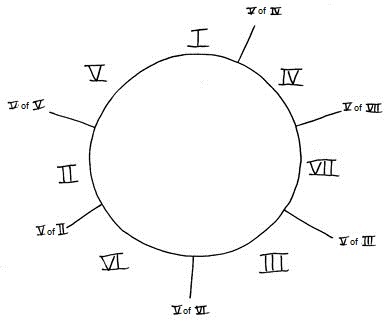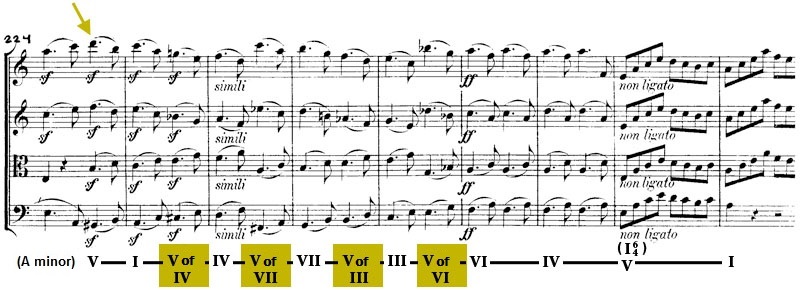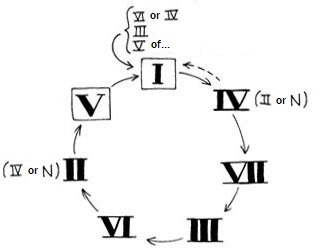5. THE MECHANISM OF INTERPOLATION
Interpolation
occurs when an extra function (or a group of other functions) is inserted
between two neighboring functions in the cycle. Three distinct
categories of events illustrate the most common types of interpolations that appear in the harmonic discourse.
1) First, the use of secondary functions and, more specifically, of secondary dominants
Figure 15

Example 24 : F. Mendelssohn : String Quartet no 2, op. 13, IV, Presto (mm 224-232)
Mechanism of interpolation with the systematic insertion of a secondary
dominant between all consecutive functions in the circle of fifths (with
one exception)

It
is possible, on occasion, that a secondary dominant appears after a
secondary tonic rather than before it - following the example of the
principal pair V - I being treated in retrograde, thus I - V.
Example 25 : F. Schubert : Winterreise, op. 89, no 11, Frühlingstraum (mm 1-4)

2) The use of harmonic sequences other than those which reproduce the fundamental structure (the descending
circle of fifths) and which are assimilated into an interpolation
due to imitation of the fundamental pair V - I.
Example 26 : F. Liszt : Transcendental Etude no 1 (mm 5-6)

3) The use of pleonastic elements where we find a juxtaposition of the same functions which, with respect to the first
mechanism of intervention, could act as substitutes for one another.
Figure 16

This results in a sort of standstill, a loss of momentum, as demonstrated in the following H.S.U.'s:
- I - VI - IV - II - V - I
IV and II = pleonastic elements
- III - I - II - V - I
III and I = pleonastic elements

